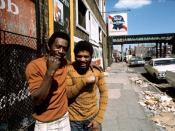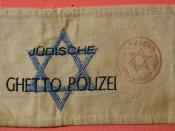Topic: Internal Colonialism Thesis: Internal colonialism has led to the impoverished status of minority groups. He's trying to prove that this can happen in the United States.
Main Points: The impoverished statues of the ghetto. The Negro's are own nothing in their own community's, and Afro American population has very little influence on the power structure and institutions of most of the larger cities.
Supporting Evidence: They are victims of the greed, cruelty, insensitivity, guilt and fear of their masters⦠The black community's are, to a great extent, controlled from the outside. A recent analysis of policy making in Chicago estimates that "Negroes really hold less than one percent of the effective power in the Chicago metropolitan.
Examples: An example that supports the main points and the supporting evidence is that other social institutions work within the ghetto. The educators, policeman, social workers, politicians, and others who administer the affairs of the ghetto residents are typically whites who live outside the black community.
Conclusion: The author's conclusion is that In America the group culture and social structure of the colonized are less developed and less autonomous; the colonized are the numerical minority; and they are ghettoized more totally, yet are more dispersed geographically, than people under classical colonialism.
Discussion: The author came to his conclusion because all these realities affect the magnitude and direction of reaction by the colonized. Yes, the author proved their thesis by saying that the most important expressions of protests in the black community during the recent years reflect the colonized status of Afro-America. What weakened the argument was how he motioned the same statements over and over. He kept stating that the blacks owned nothing, and they were powerless. What would have strengthened the article would have been if he compared the percentage of owned business in the ghetto, with the percentage of black owned businesses in the upper class neighborhoods.





